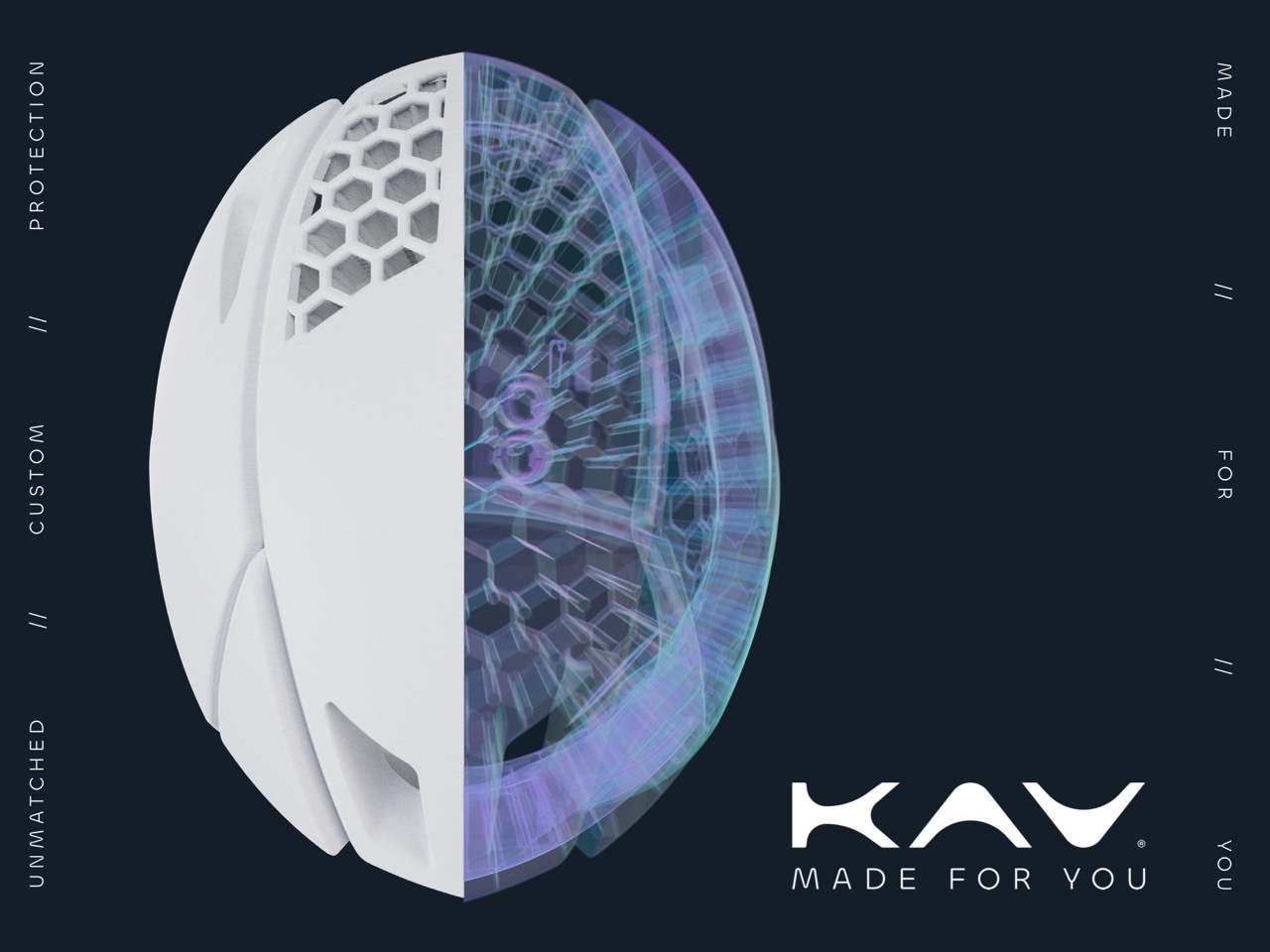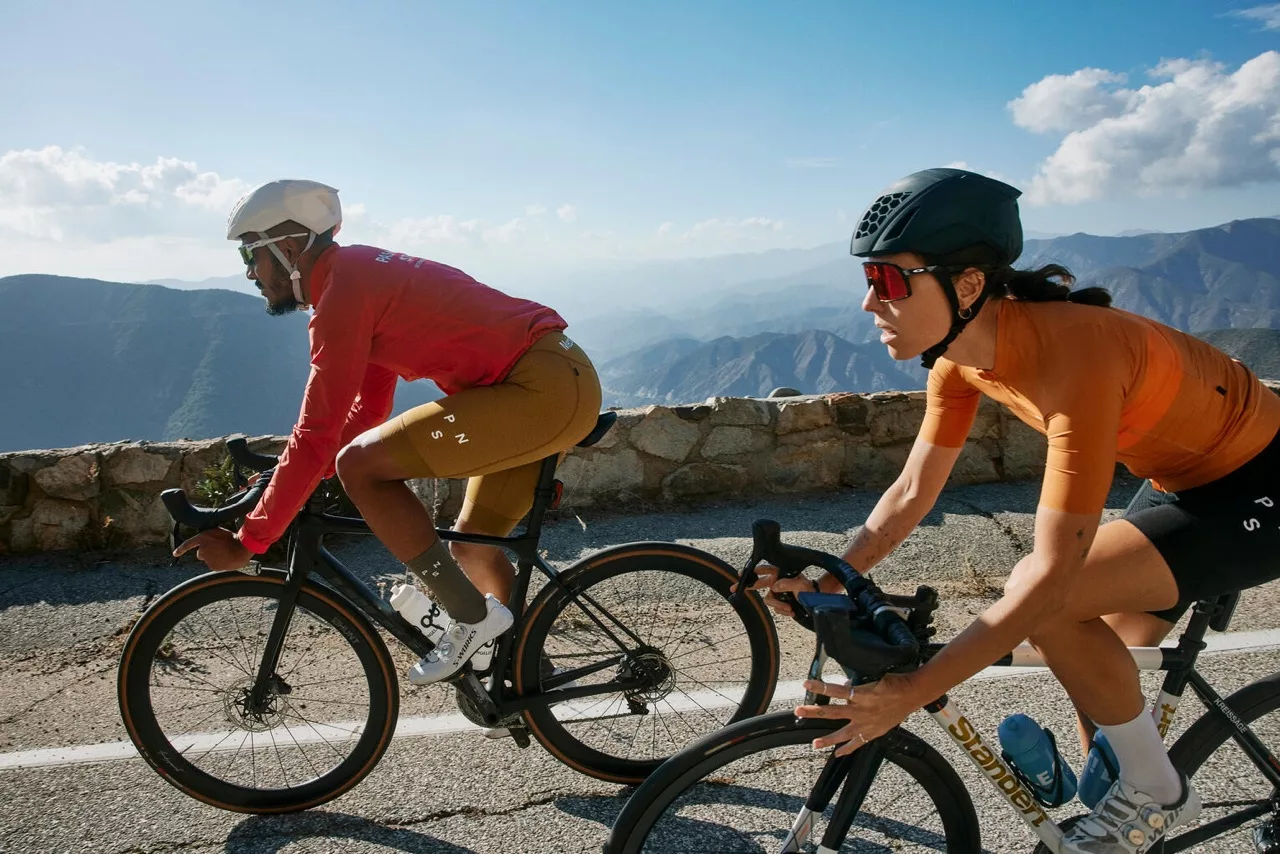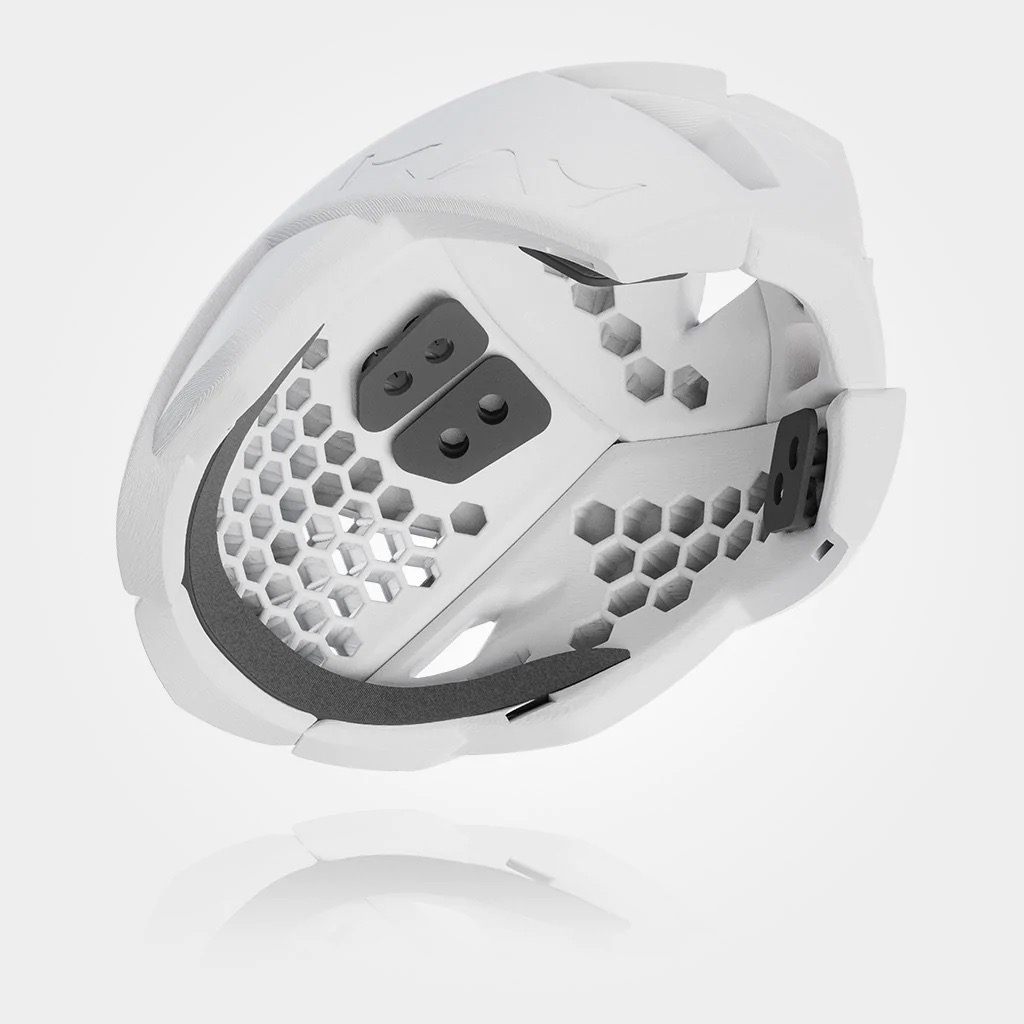If you haven’t been paying attention, 3D printing is popping up everywhere in the world of cycling. From saddles, to dropouts, to yes, even helmets. Among the companies creating helmets out of thin air, KAV has been leading the way with recent honors for their Portola helmet like a Red Dot award, a Design & Innovation Award, and one of Time Magazine’s Best Inventions of 2022.
And now, KAV is unveiling the next generation of their 3D-printed bike helmet, the Portola: KAZE.

When it comes to 3D printing, there are a number of things to consider, but one of the most important is the material itself. It has to lend itself to not only the printing process where products are built layer by layer but in this case, it also needs to perform well as an actual helmet.
According to KAV, the new Portola KAZE name is derived from the Japanese word for wind – a partial nod to the increased ventilation thanks to larger vents. But the big story here seems to be the material used to print the helmet itself, with KAV working with “the leading domestic provider of filament to compound and test over 20 proprietary co-polymers.” That search led to the sourcing of a new polymer from Japan which has been mixed with a proprietary blend of additives to create what they are calling KAV PolyCarbon.
This new filament material supposedly absorbs 35% more energy than typical EPS foam, and also unlocks a new color option – Polar White. You’ll still be able to get the Portola KAZE in Cosmos Black as well.
KAV claims the KAZE performs 25% better than the CPSC impact requirements, though we’d still like to see how it compares in third-party testing like that from Virginia Tech.
Thanks to revisions to the straps, padding, and tweaks to the inner honeycomb structure, the KAZE is now 10% lighter. Based on our testing of a Portola, that would make it around 343g (though the custom-fit nature means a wide range of actual weights). But a helmet that is lighter with better ventilation and padding is definitely welcomed, and the new patent-pending sweat management system sounds like it could be an interesting addition. KAV also claims that a “new fusion construction bonds moisture-wicking fabrics directly to the helmet, eliminating adhesives and weight.”
While the KAZE is still a premium helmet with a premium price tag, KAV has taken a big chunk out of the cost of the helmet moving from $390 for the Portola, to $320 for the Portola KAZE. Made in Redwood City, CA using renewable energy, KAV helmets include a 30-day risk-free trial, 5-year warranty, and a 100% crash replacement policy.




